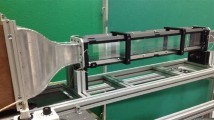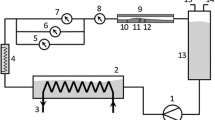Abstract
Researchers at the Cavitation and Multiphase Flow Laboratory of the University of Michigan worked in conjunction with Princeton Scientific Instruments (PSI) engineers to employ a new digital imaging system in the study of partial attached cavitation. The new high speed solid state system, the Princeton Scientific Ultra Fast Framing Camera (UFFC), was designed for cavitation studies where framing rates of 105–106 frames/s are required to image the detailed mechanisms of cavitating flows. The UFFC, which uses a PSI patented Charge Coupled Device (CCD) array image sensor, was designed to capture 30 frames at a maximum framing rate of 1 million frames/second. In these experiments, a maximum framing rate of 125000 frames per second (8 μs/frame) was used to examine cavitating vortices in the closure region of a partial attached cavity. The vortical structures in the closure region of the attached cavity were imaged, and the evolution and collapse of these flow structures were examined. Relationships between the cavitating vortices size, strength, and collapse time were observed.
Similar content being viewed by others
Author information
Authors and Affiliations
Additional information
Received: 15 November 1996/Accepted: 1 December 1997
Rights and permissions
About this article
Cite this article
Laberteaux, K., Ceccio, S., Mastrocola, V. et al. High speed digital imaging of cavitating vortices. Experiments in Fluids 24, 489–498 (1998). https://doi.org/10.1007/s003480050198
Issue Date:
DOI: https://doi.org/10.1007/s003480050198




